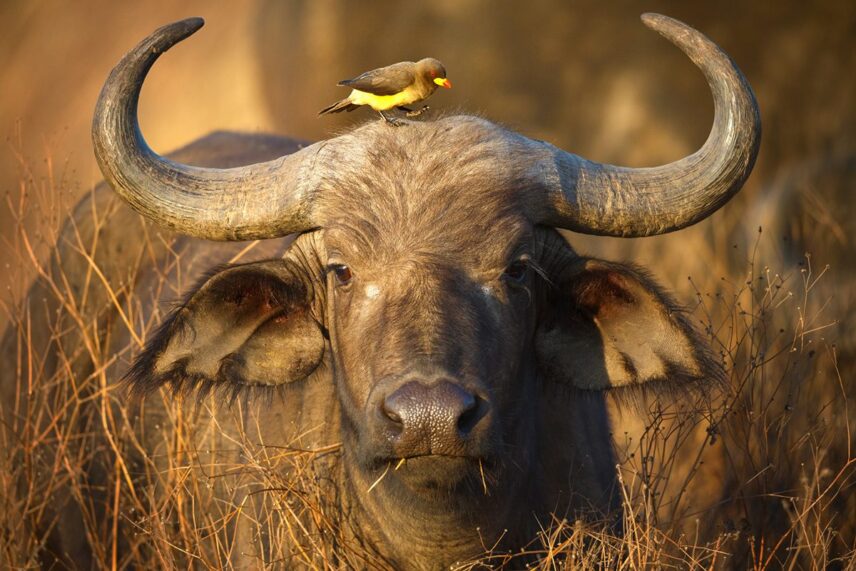When you’re lonesome, life in the wild can be hard. That’s why so many species pair up, forming unlikely alliances that help both partners survive and thrive.
These alliances are commonly known as symbiotic relationships, where two organisms take part in a mutually beneficial relationship. Turns out, the Serengeti is full of them!
Here are six examples of symbiotic relationships in the Serengeti.
Zebras & Wildebeest
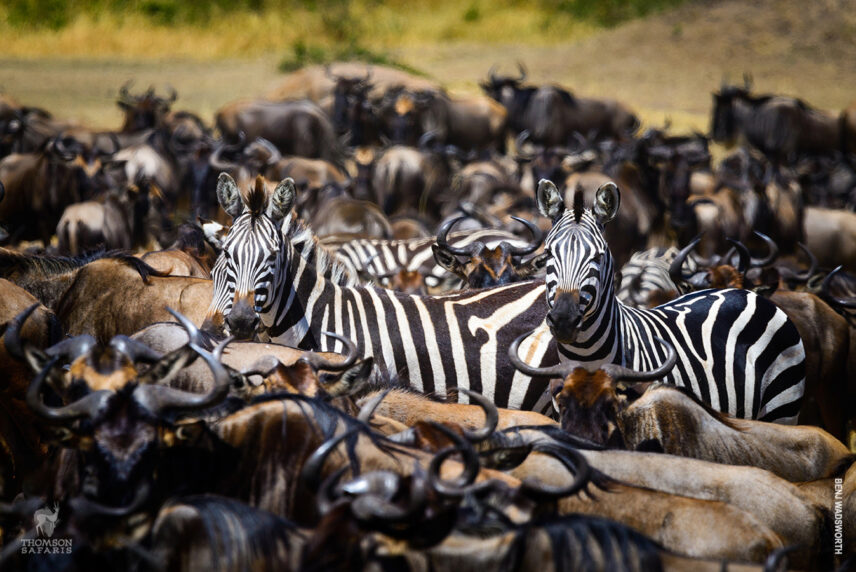
During the Great Migration, some 2 million grazing animals move in a continuous cycle in pursuit of the rains. The species that make up those 2 million–primarily wildebeest and zebra–have much more in common than just a thirst to quench.
Safety is a pretty serious issue to both species, and they’ve found some clever ways to help each other. The wildebeest uses its superior sense of sound and smell to stay wary of predators, while the zebra uses its excellent eyesight to scan for threats. Together they have a strong “alarm” system, and the massive size of their accumulated herds reduces the chance of any single individual being targeted by a predator.
Their relationship offers so much more than safety, though! Zebras are well-known to have an incredible capacity for memory, and can often retrace their route from the previous year’s migrations, much to the benefit of wildebeest that have gone astray. In turn, wildebeest are adept at finding water sources–a useful ability for both species during the drier seasons.
Zebras and wildebeest don’t compete for food, either. Zebras like to munch on taller grasses, while wildebeests prefer the shorter stuff. It’s a nearly perfect complementary pairing –we’d all hope for a match like this on a 1,200-mile journey!
Honeyguides & Humans
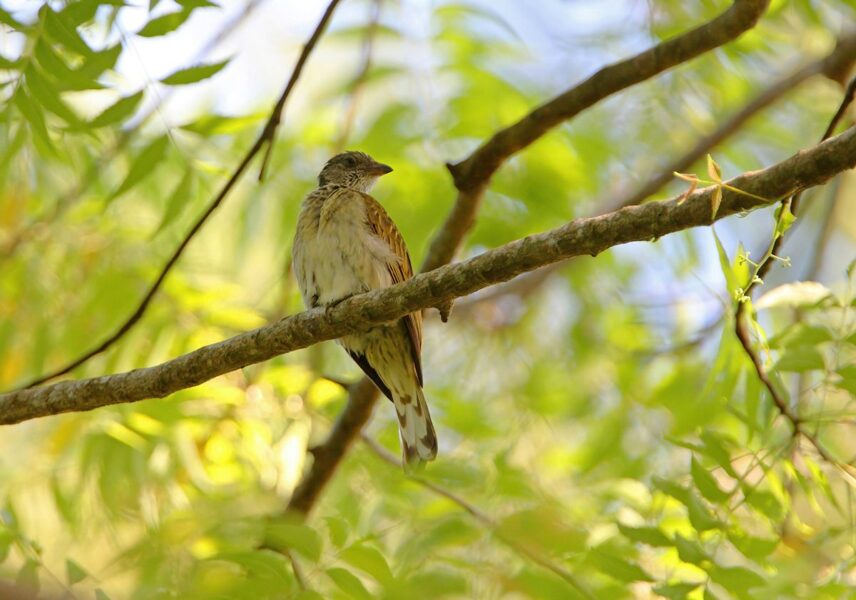
Honeyguides and human hunters have a pretty sweet working relationship. In northern Tanzania, honeyguides know how to lead humans to wild beehives stashed in the cavities of baobabs and other trees. The bird waits patiently while humans crack the hives open and take away the sweet, golden stuff within. Then, the honeyguide feasts on the wax and calorie-rich larvae left behind.
This unlikely duo has been chronicled in Africa as early as the 1500s, but some experts say the relationship budded over 1.9 million years ago with homo erectus. Humans have even developed a “brr-hm” noise to let honeyguides know when they’re ready to hunt.
Whistling Thorn Acacias & Ants
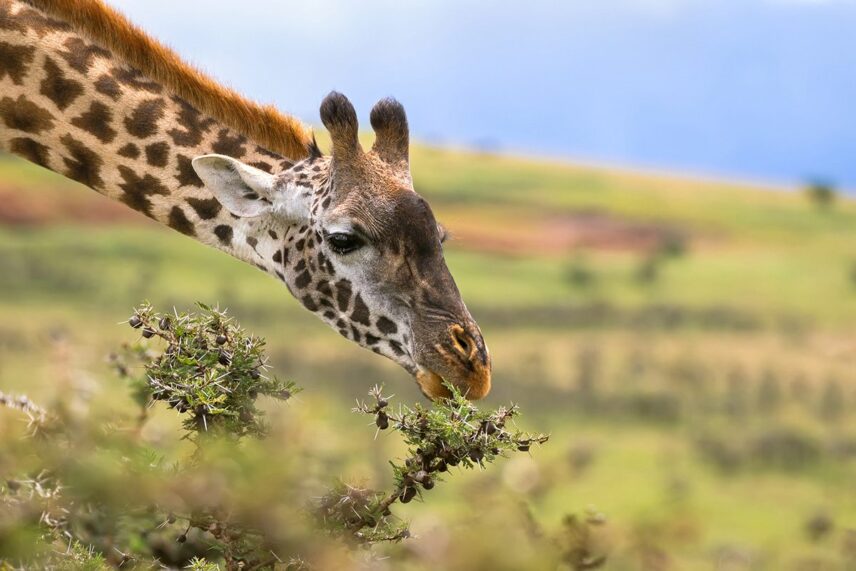
Whistling-thorn acacias and ants have an unlikely defensive pact. Found in the Serengeti grasslands, the acacia is defined by its swollen nodes running the length of its branches. Ants use these -hollowed out nodes for housing; in exchange, they repel hungry herbivores and wood-boring beetles that would otherwise threaten the tree’s survival.
When wind blows across the nodes where ants have made passageways, it produces a whistling noise–thus, the tree’s name!
OXpeckers &…A Lot of Animals
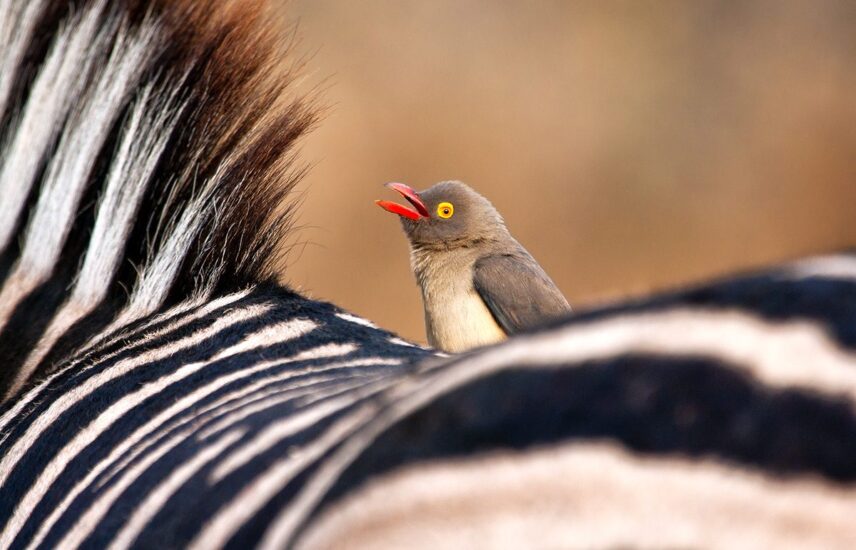
Oxpeckers may have the power of flight, but they aren’t afraid to hitch a ride from their four-legged companions. They’ll transit atop rhinos, zebras, wildebeest and giraffes if it means snacking on the ticks and pests that snack on these animals.
The oxpecker gets a meal, and the mammals are freed from potentially harmful parasites. Sounds like a win-win, right? Well, oxpeckers can be a little rude to their hosts–sometimes they’ll reopen old wounds on the host’s body and fill up on fresh blood.
Some scientists refer to oxpeckers as “vampire birds” for this reason. In any case, the ungulates tolerate it–it’s a worthwhile price to get rid of parasites.
Warthogs & Mongooses
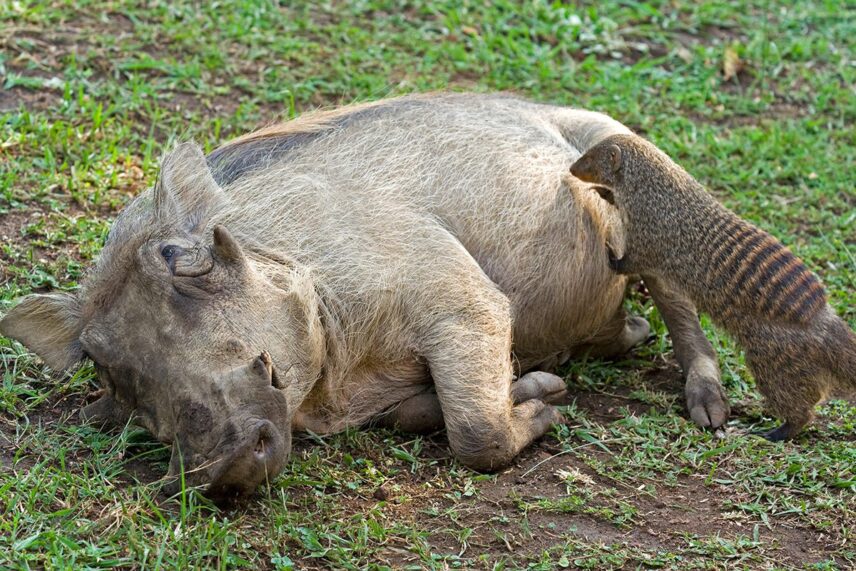
Even the powerful, battle-hardy warthog needs to gussy up every now and then. When it does, it seeks out a pack of mongoose hungry for a snack.
Standing still or laying on its side, the warthog will allow the mongooses to approach. Then, scampering and scurrying across the pig’s body, the mongooses lick up high-protein ticks and other parasites. One species gets a meal, and the other gets a bath!
This kind of symbiosis is incredible because it’s so rare. Mammals rarely lend a paw to other mammals like this!
Olive Baboons & Elephants
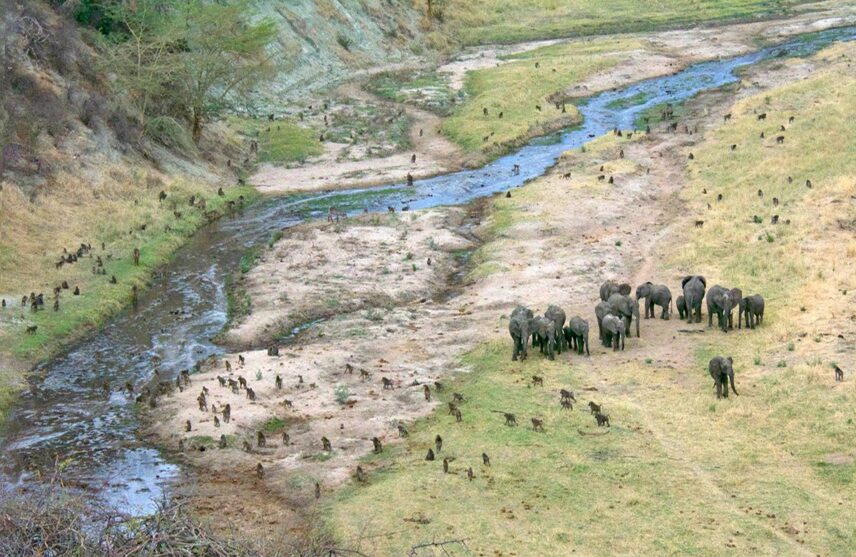
When water is scarce, olive baboons can turn to elephants to quench their thirst. Elephants are known to dig water holes when it’s dry so they can drink from the earth. The olive baboons follow these elephants around and slurp up what’s left.
In turn, the elephants rely on baboons to serve as an alarm system for nearby predators. Because these baboons travel in groups of up to 150 individuals, it’d be hard to miss their loud, whining sirens!
